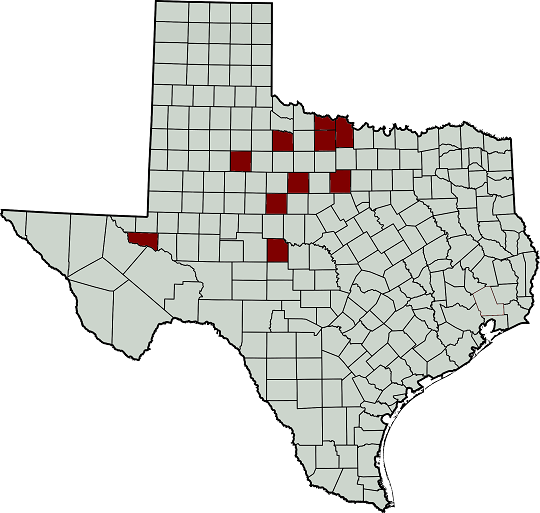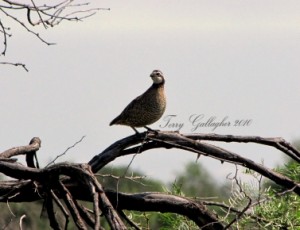Texas is home to four species of quail, a claim that only three other states can make (Arizona, California, and New Mexico are the others). The Northern Bobwhite Quail is found in all but the western third of the state, and the scaled or “blue” quail is found in the western half. The Montezuma and Gambel’s quail are much less common and are found in only a few areas due to their specific habitat needs.
The bobwhite quail (Colinus virginianus) is one of the most easily recognized wildlife species in Texas. The familiar “poor-bob-white” whistle of the male bobwhite can be heard during the spring and summer over most of the state. However, few Texans realize the tremendous impact this species has on our state. Recent data confirm that there are more than 175,000 quail hunters and an additional 400,000 people actually participating in watching, feeding, or photographing quail in Texas each year.
Quail populations have declined across the state over the past few decades. While this is bad news for the quail, and quail enthusiasts, it is part of a larger picture. Quail are the “canary in the coal mine” for a number of other species of Texas wildlife. Species as different as the Texas horned lizard, Eastern Meadowlark, and Northern Shrike have seen very similar population declines during the same period.
While a host of factors are probably involved, the fundamental reason for quail population decline is loss of habitat. Human development leads to habitat fragmentation, and isolated habitat fragments result in small, isolated quail populations. These small, isolated populations are unable to withstand bad times, and have a greater risk of becoming locally extinct.
Stabilizing quail populations, or reversing the decline, will take a coordinated, long-term effort to conserve Texas grasslands. The general public must be informed about the plight of quail in Texas; private and public landowners must be provided with incentives and information to better manage their properties; and we need to band together in cooperatives and partnerships to manage areas of significant size. Management information is available at the AgriLife Bookstore as well as our Landowner Resources page.
Thanks to the Reversing the Quail Decline Initiative (RQDI), new research is being conducted to help determine why quail population in Texas are declining and what can be done about it. RQDI is a collaboration between Texas A&M AgriLife Extension and the Texas Parks and Wildlife Department seeks to understand, address, and reverse the critical quail decline in Texas. Since its inception in September, 2013, RQDI has funded 13 projects at several universities in Texas. In addition to research, this effort includes support of programs like Quail Masters, Quail Appreciation Days and youth camps like Bobwhite Brigades.
Additionally, the Texas Quail Index (TQI), an effort piloted by the Texas A&M AgriLife Extension Service. TQI is designed to educate land managers, hunters and the general public about the population dynamics, habitat requirements and other factors affecting bobwhites in Texas. Currently, there are 35 counties and 7 Wildlife Management Areas involved in the project. TQI unites local County Extension Agents (CEA) with land managers and interested community members who work together to implement a variety of quail assessment techniques at a local ranch. Techniques include quail abundance, predator abundance and habitat quality. This type of one-on-one dialogue between local CEAs and community members offers hands-on experience that they can then conduct on their respective properties.
We have 44 videos related to quail biology and habitat management available on our YouTube channel.

